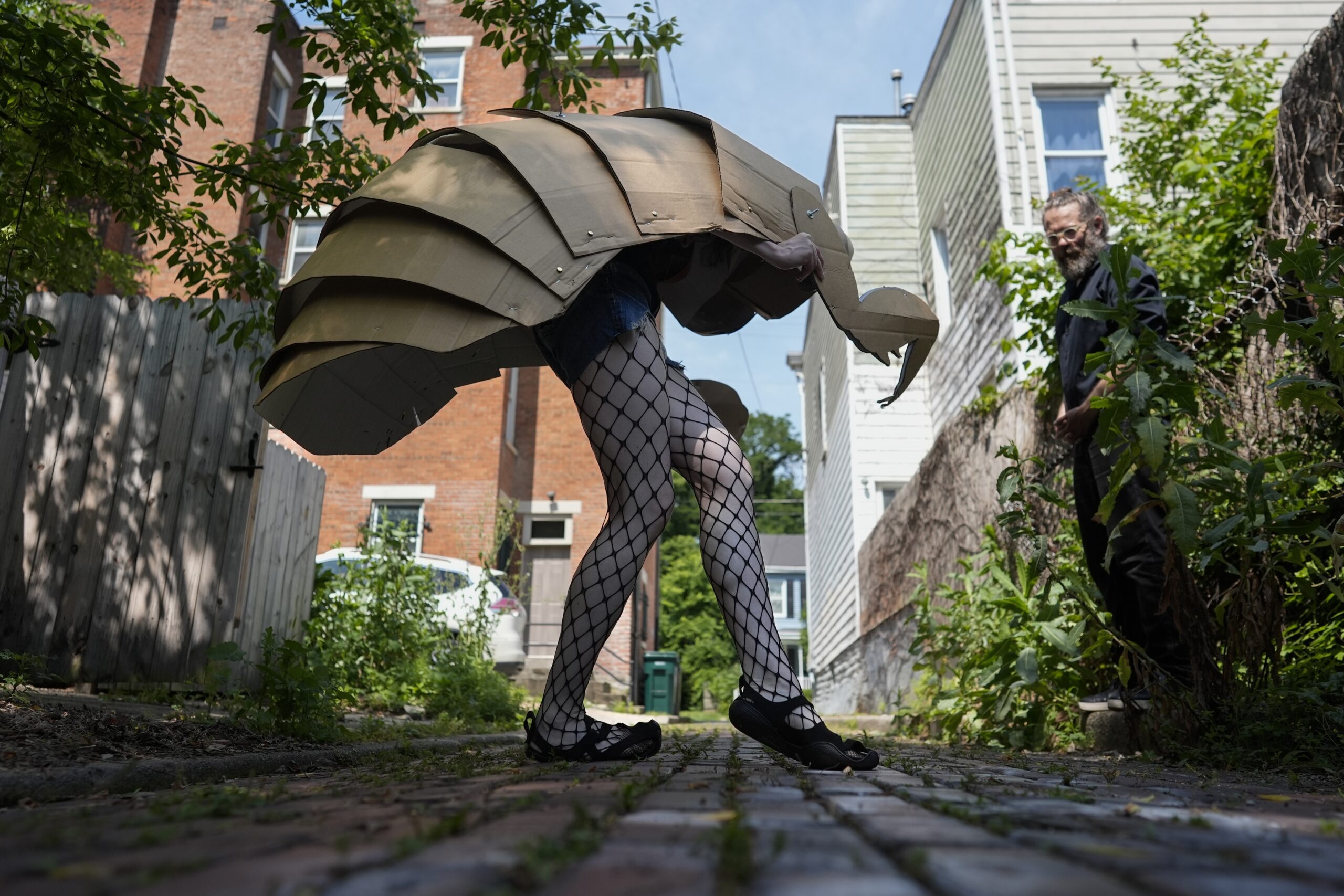Renee Martin performs her cicada striptease in fishnet stockings and a cicada nymph puppet costume in a Cincinnati ally on Tuesday, June 4, 2024. The periodical cicadas that have blanketed parts of the American Midwest this spring are strange creatures, but they have nothing on some of their superfans. AP Photo/Carolyn Kaster
Mayumi Barrack sees a pair of mating periodical cicadas getting together, whips out her phone, says, “Hi guys!” and takes their picture.
“I’m not really a bug person, but as I look more and more I feel they are adorable,” Barrack explained, noting that many other creatures — birds, squirrels, raccoons and more — are just as eager to get close to the bugs, if only to turn them into food. “I just want to document they existed.”
And boy has she. Barrack has posted more than 4,600 photos of the bugs on the Cicada Safari app for cicada enthusiasts. That’s 2,000 more than her nearest competitor. She’s the queen of cicada chasers, though she doesn’t really chase — most of the pictures are from her backyard — and she sees herself more as a mother to the bugs than as a queen.
“I’m caring for them,” said Barrack, standing in her tree-and-flower filled suburban Chicago backyard.
Periodical cicadas are strange, with eccentricities that include super-strong urine flow and a zombie fungus infection. But their superfans are unusual, too, or at least highly passionate.
Gene Kritsky, a professor of biology at Mount St. Joseph University in Cincinnati, has been working toward this year’s massive cicada emergence for decades. He first heard about cicadas in 1972 and has been studying and chasing them since 1974. He wrote the book on the current emergence, “A Tale of Two Broods.” He also created the cicada tracking app that enthusiasts like Barrack use to post pictures and find where the bugs are in large numbers.
This is the third time Kritsky has mapped Brood XIII of the cicadas. That’s quite an accomplishment…
Read the full article here

Leave a Reply